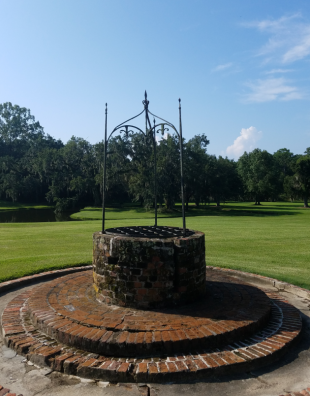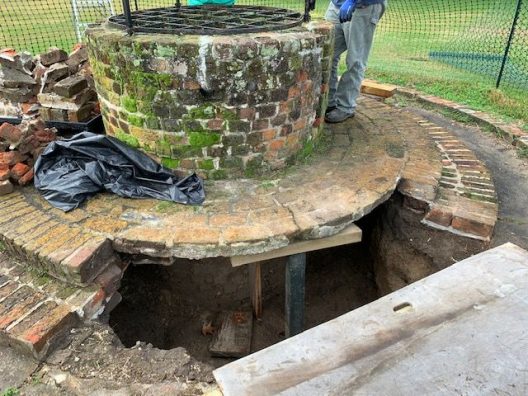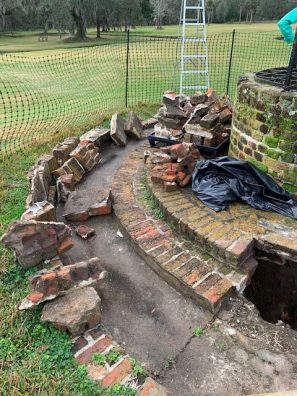Voted the Best Place to See by Condé Nast Traveler.


The Victorian Well before; Summer 2019
A few years ago, a structural engineer informed us that at Drayton Hall, we have “highly mobile” soils. We filed that away under “interesting trivia engineers need to know” until very recently when our highly mobile soils started causing trouble. If you’ve looked out at the landscape from the portico of Drayton Hall, you’ve seen the top of a brick well shaft with a decorative iron finial. We estimate that this well is approaching 100 years old—a very new addition to the property in the scheme of things, but not so new that it’s without preservation problems.

Unbeknownst to us, the well shaft was failing somewhere below ground, letting water—and our highly mobile soil—to pour into the well. Our first inkling of trouble came when we saw cracks forming in the circle of brick and concrete surrounding the well. We inserted a 4-foot rod into one of the cracks to probe for the bottom and felt…nothing. Caution tape and fencing went up in short order, and we called in the cavalry. Our preservation staff were joined by a preservation contractor, a ground penetrating radar expert and the aforementioned structural engineer. Together, we pieced together the chain of events that led to the hole forming under the brick and concrete around the well. As water flowing below ground carried soil into the degraded well shaft, it left a void on the exterior of the well shaft deep below ground. The void continued to grow until the soil above it caved in, leaving the brick and concrete above unsupported and causing the cracks to form.
Since the well is no longer in use, we opted to backfill the well shaft and the void on the exterior to stop the soil erosion and prevent the well from collapsing completely. At about fifteen feet deep and four feet in diameter, it took 9.5 cubic yards of material to fill the well shaft and adjacent void up to ground level. The last step in the process will be re-laying the bricks around the exterior, and when that is finished, we’ll be able to make the well accessible to visitors once again.

One last thing, if you’re wondering what treasures we buried when we filled in the well, consider the following. We think this well was installed around 1930, and from conversations with the Drayton family, it seems it was in use for a few decades. People tend not to throw things into wells they’re actively using, which means, whatever may have been thrown into the well would be pretty modern—maybe some soda cans and pennies, but no priceless artifacts.